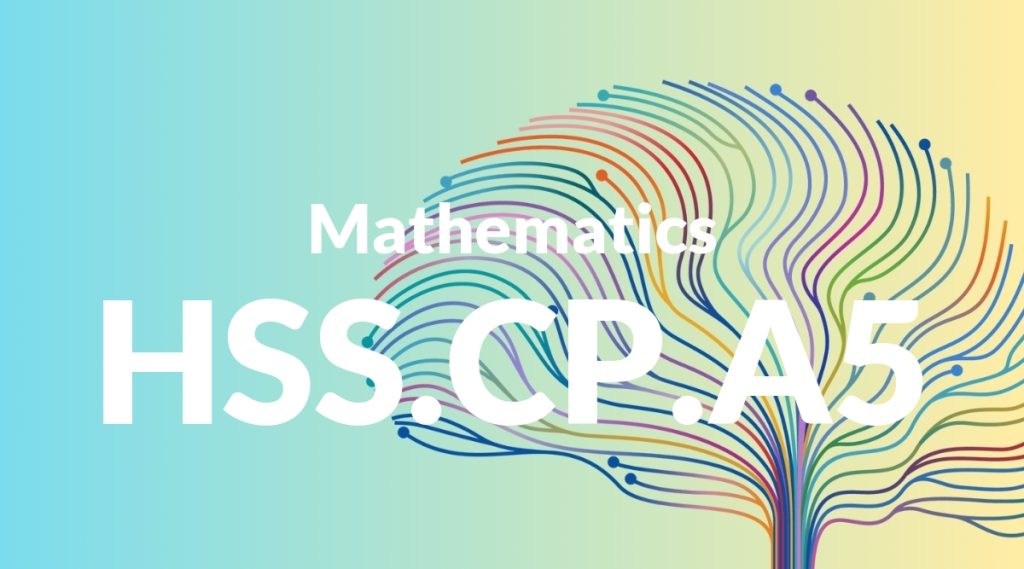Standard: HSS.CP.A5 – Recognize and explain the concepts of conditional probability and independence in everyday language and everyday situations. For example, compare the chance of having lung cancer if you are a smoker with the chance of being a smoker if you have lung cancer.
Grade level: High School: Statistics & Probability
Subject: Mathematics
Domain: Conditional Probability & the Rules of Probability
Teacher Overview
This standard focuses on helping students understand and articulate the concepts of conditional probability and independence using everyday language and examples. It is crucial for students to grasp these concepts as they form the foundation for more advanced statistical analysis and real-world decision-making. Students should be comfortable with basic probability concepts, including calculating probabilities, understanding events, and distinguishing between independent and dependent events.
After mastering this standard, students will be prepared to tackle more complex probability problems, including Bayesian probability and advanced statistical analysis.
Common Misconception 1
A common misconception is that conditional probability is the same as simple probability. This is incorrect because conditional probability takes into account the occurrence of a preceding event, which affects the likelihood of the subsequent event.
Intervention 1
To remediate this misconception, use visual aids like Venn diagrams and real-life examples to clearly differentiate between simple and conditional probability.
Common Misconception 2
Another common misconception is that independent events cannot occur together. This is incorrect because independence means the occurrence of one event does not affect the occurrence of the other, not that they cannot happen simultaneously.
Intervention 2
Provide clear examples of independent events that can occur together, such as flipping a coin and rolling a die, to clarify this concept.
Prerequisite Knowledge
Students should have a basic understanding of probability, including how to calculate simple probabilities and an understanding of independent and dependent events.
Subsequent Knowledge
Students will develop skills in more complex probability problems, including Bayesian probability and advanced statistical analysis.
Instructional Activities
- Create and analyze two-way tables to explore conditional probabilities.
- Use Venn diagrams to visualize and solve conditional probability problems.
- Discuss and solve real-world problems involving conditional probability.
- Conduct experiments to collect data and calculate conditional probabilities.
- Utilize probability trees to map out and solve conditional probability scenarios.




